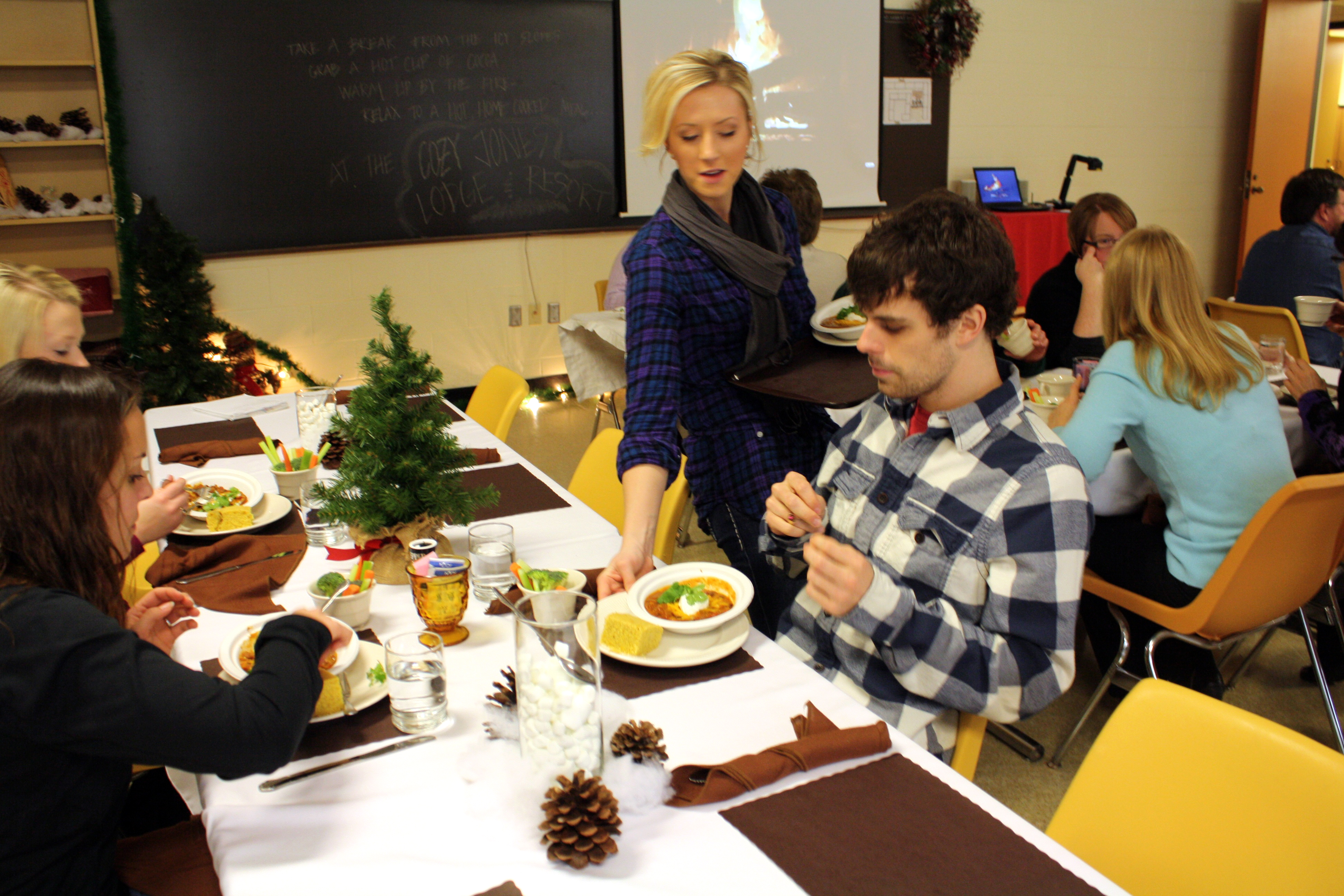The scenery changes in Jones 364 every week. Last week, the room was a ski lodge on the great slopes of Moorhead. Hats and mittens hung by the doorway, and the smell of chili filled the room. This week it was a jungle. Next week it will be a 1950s diner.
The nutrition department’s quantity food production class uses a restaurant atmosphere to practice managing a food service. Linda James, associate professor of nutrition, supervises as her students take turns playing with their guests’ imagination as they travel across the globe and through time when they step into their makeshift restaurant. Their guests – Concordia College faculty, staff and students – frequent the place every Thursday to grab a bite to eat.
James said the students in her class learn skills they will use in their careers as dietitians. Many will go on to manage a large food service. The experience of management in quantity food production prepares them for the work they will do in their internships.
Two students take the position of manager every week. Seniors Jamie Levine and Kristy Singlestad managed the ski lodge meal.
“It’s challenging being a manager,” Singlestad said. “It takes a long time to plan every detail.”
Glitches happen as much as the managers try to make the meal seamless. Singlestad and Levine were responsible for making the recipe conversion from a standard meal for eight people to one that makes enough for 60. Singlestad did not expect other factors to be involved in her calculations.
Her chili recipe ran low because water evaporated while it cooked. Luckily, there was extra chili on reserve in the freezer.
Managing is more than choosing recipes. The mangers assign duties to the other students, purchase ingredients and decorate the dining room. James said the theme allows her students to show creativity.
“Every student wants to be unique,” James said. “They get to do things they never do in other classes.”
This means the themes vary with every group in every class. Senior Caleb Gueldenhaar will manage the 1950s meal Feb. 10. Decoration will be easy.
“We joke that the building’s old enough, we could just leave it as it is,” Gueldenhaar said.
People who want to attend the meal make reservations throughout the week before each event, but the class makes some extra food for walk-ins as well.
The price covers the cost of an appetizer or salad, a main course and a dessert. James said the goal is to break even. The revenue covers the cost of food and decorations, but it does not cover labor. This means patrons can eat a meal for the half the price of the same meal if it were served in a restaurant.
“If we started losing money, I would have to raise the rate,” James said.
Barb Martin, an administrative assistant for the enrollment office, has been a regular customer for several years. The good deal and variety attracts her to the meal every Thursday.
Her favorite recipe is a white chili that the class made in the past. She asked for the recipe afterward so she could make the chili at home.
“It’s something I would have never tried in a restaurant,” Martin said.
The quantity food meals will continue for the rest of the semester. Normally the course is only offered for the first block of second semester, but there were enough students to fill another block. James has never taught quantity foods for the second half of the semester, but she knows that her students will keep their guests pleased with new themes and a changing menu.


